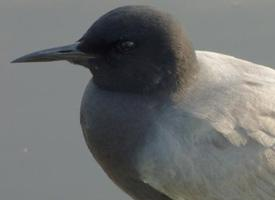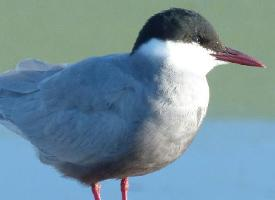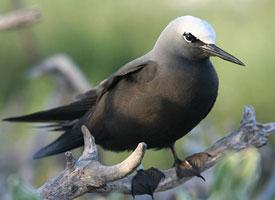
Veszélyeztetettség
| Veszélyeztetett |
Állatleírás
The Black Tern (Chlidonias niger) is a small and enigmatic bird species that belongs to the tern family Laridae, known for its sleek design and remarkable adaptability to different aquatic environments. This bird presents a captivating study in contrasts and adaptations, showcasing the beauty and complexity of avian life.Adult Black Terns in their breeding plumage are strikingly beautiful. They sport a deep, velvety black color on their heads, necks, and undersides, which sharply contrasts with their light grey wings and back. Their tails are forked, adding to their streamlined appearance, which is optimized for agile flight over water surfaces. During the non-breeding season, their plumage undergoes a dramatic transformation, with the black fading to a pale grey on the body and white on the head, retaining darker patches only on the ears and crown. Juvenile Black Terns resemble the non-breeding adults but have a more mottled appearance.
One of the most distinctive features of the Black Tern is its size and build. It is relatively small, measuring about 23 to 26 cm in length, with a wingspan ranging from 57 to 60 cm. Despite its delicate appearance, the Black Tern is a robust and skilled flyer capable of executing intricate maneuvers over water as it searches for food. Its diet mainly consists of small fish, insects, and aquatic invertebrates, which it skillfully catches either by skimming the water's surface or by performing sudden, darting dives.
The Black Tern inhabits freshwater marshes, lakes, and coastal wetlands across North America and Eurasia during the breeding season. It is a migratory species, with populations in North America wintering in the coastal regions of South America and Caribbean, and those in Eurasia moving to Africa. Their nesting habits are as unique as their appearance; they prefer to build floating nests from vegetation in shallow water bodies or sometimes nest on the ground near water. This preference for nesting near water is crucial for their survival, as it provides them with the necessary food resources and protection from many predators.
Despite its beauty and fascinating ecology, the Black Tern faces several threats that have led to a decline in its population. Habitat destruction due to wetland drainage, pollution, and climate change are significant challenges. The loss of suitable wetland habitats reduces available nesting sites and food resources, directly impacting their breeding success. Conservation efforts are crucial for this species, focusing on protecting critical habitats, monitoring populations, and researching the impacts of environmental changes on their life cycle.
In summary, the Black Tern (Chlidonias niger) is a captivating species that embodies the delicate balance of aquatic ecosystems. Its striking appearance, complex behaviors, and the challenges it faces in a changing world highlight the importance of conservation efforts to ensure that this beautiful bird continues to grace our skies and waterways for generations to come.
Hasonló állatok
Új állatfotók
Top 10 állat
- Dolphin gull (Leucophaeus scoresbii)
- Diana monkey (Cercopithecus diana)
- Moustached guenon (Cercopithecus cephus)
- Galápagos tortoise (Geochelone nigra complex)
- Japanese macaque (Macaca fuscata)
- Russian tortoise (Testudo horsfieldii)
- Stone loach (Barbatula barbatula)
- Greek tortoise (Testudo graeca)
- Common flying dragon (Draco volans)
- Vendace (Coregonus albula)


